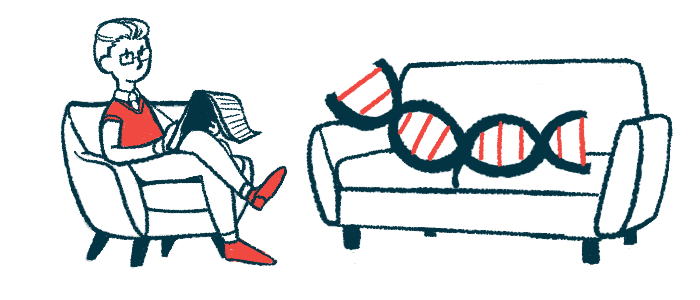Zolgensma into spinal canal helped older SMA type 2, 3 children


Older children with spinal muscular atrophy (SMA) type 2 or 3, ages 2–5, given a single injection of Zolgensma into the spinal canal, showed clinically meaningful gains in motor function after one year, according to final data from the STRONG study.
Such gains also were significantly better than those observed in similar SMA children who participated in a natural history study.
Despite younger children — ages 6 months to 2 years — not achieving these same improvements, some reached developmental milestones related to motor function and gross and fine motor skills.
Details from the STRONG study, “Intrathecal Onasemnogene Abeparvovec for Sitting, Nonambulatory Patients with Spinal Muscular Atrophy: Phase I Ascending-Dose Study (STRONG),” were published in the Journal of Neuromuscular Diseases.
Zolgensma is a gene therapy for all types of SMA. Given as a one-time intravenous (into-the-vein) infusion, it is approved in the U.S. for newborns and toddlers up to age 2. The treatment uses a modified and harmless virus to deliver a working copy of SMN1, the gene that is defective in people with SMA.
Some children with milder forms of the condition may not be eligible for Zolgensma because the onset of symptoms can occur after age 2. Furthermore, higher doses based on weight may raise safety concerns regarding greater viral loads.
Intrathecal administration, which involves an injection directly into the spinal canal, is an alternative method to deliver the therapy directly to the brain and spinal cord, allowing a higher efficacy per weight-based dose. In animal models, this method of administration allowed the amount of viral vector to be reduced by nearly 10 times, with similar distribution and efficacy in neuronal tissues.
The now-completed open-label Phase 1 STRONG clinical trial (NCT03381729) evaluated the safety and efficacy of intrathecally administered Zolgensma in 32 children with SMA type 2 or 3, ages 6 months to 5 years. Eligible participants were able to sit independently for 10 or more seconds, but could not stand up or walk.
Dosing details
Children were divided into two age-based groups: 6 months to 2 years and 2- to 5-year-olds. Three children received a low dose of 60 trillion vector genomes (vg), 25 a medium dose of 120 trillion vg, and four were given the 240 trillion vg high dose.
The recommended dose of intravenous Zolgensma is 110 trillion vg per kilogram of body weight, meaning that the higher dose used in this trial was lower than what would be given to a baby weighing 3 kg (about 6.6 pounds).
Low- and medium-dose patients completed 12 months of follow-up, while those given the high-dose completed 15 months of follow-up.
One-year data showed Zolgensma treatment led to clinically meaningful improvements in motor abilities in the older group treated with the medium dose. This was indicated by a mean 6-point rise in scores from the Hammersmith Functional Motor Scale-Expanded (HFMSE), a validated measure of motor function in SMA children.
Older children achieved significantly greater HFMSE scores compared with a population-matched group from the Pediatric Neuromuscular Clinical Research (PNCR) natural history study, with a mean difference of 5.5 points.
Main goal achieved
The trial met its main goal of inducing HFMSE clinically meaningful improvements of three points or more among older children treated with the medium dose. Of 12 patients, 11 (91.7%) reached a clinically meaningful improvement at any time after treatment compared with two of 15 (13.3%) in the PNCR group. This represented a significant, 78.3% difference.
In the 13 younger patients, however, the trial failed to meet its primary goal. One patient (7.7%) treated with the medium dose could stand independently, compared with five of 51 patients (9.8%) in PNCR, a difference that did not reach statistical significance. One of three patients given the lower dose (33.3%) could stand independently.
While intrathecal Zolgensma did not help patients attain independent sitting, other motor milestones were observed in younger children. There were six children treated with the medium dose who reached 15 motor milestones (rolls, crawls, pulls to stand, standing with assistance, standing alone, walking with help, and walking alone).
In the younger low-dose group, two children treated at 18.9 and 20.2 months gained four motor milestones (crawls, pulls to stand, stands alone), while three in the high-dose group achieved three motor milestones (rolls, pulls to stand, stands with assistance).
Three older patients in the medium-dose group also reached four such milestones (rolls, stands with assistance, and walks with assistance). No older patients treated with Zolgensma or in the PNCR natural history study achieved independent walking.
Based on Bayley-III scores, younger children in the medium dose group saw more improvements in gross motor skills at one year than older children (median of 5 vs. 3 points), as well as in fine motor skill scores (median 12 vs. 10.5 points). Younger patients given both low and high doses also showed improvement in gross and fine motor skills.
Some adverse events
All children had one or more treatment-emergent adverse events (TEAE), nine of which were reported as severe. The most frequent events occurring in more than 20% of patients included upper respiratory tract infection, fever, cough, vomiting, and constipation.
Of the 12 TEAEs considered related to treatment, a case of elevated liver enzymes in the bloodstream — a sign of liver damage — was deemed serious. None of the participants required invasive ventilatory support, and no deaths were reported.
“Intrathecal [Zolgensma] was safe and well-tolerated [and] demonstrated efficacy for SMA patients 2–5 years of age treated with the medium dose …, as observed with increases in HFMSE scores from baseline that contrast with natural history,” the researchers concluded.
However, “the primary efficacy endpoint [of standing without support for at least three seconds] in patients 6–24 months of age was not met within the post-dose observation period of the STRONG study,” they noted.
The post Zolgensma into spinal canal helped older SMA type 2, 3 children appeared first on SMA News Today.


